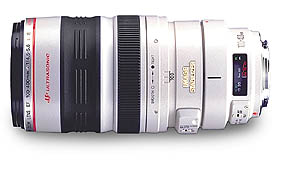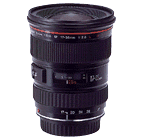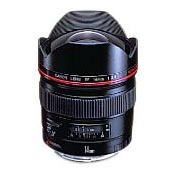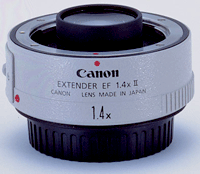Photo Equipment
Camera
- I currently own a Canon D-60.
- My first DSLR was Canon D-30. For full featured review, visit DP Review's article on The D30. Michael Reichmann also has an excellent site on landscape photography whose article on the Canon D30 played a large part in convincing me to go digital.
Lens
- Canon 28-70L f/2.8 USM lens
 This is basically my workhorse lens. It is on all the time and used primarily when traveling. It is a very bulky and heavy lens for the zoom range. Also, it is a one incredibly sharp lens and well constructed motherf***er, I mean lens. It has taken so much use and it can be annoyingly big and heavy. Open wide at 28mm, it blocks the built-in flash on the D30, but I haven't
regretted the purchase a single day and I wouldn't replace it for anything else.
This is basically my workhorse lens. It is on all the time and used primarily when traveling. It is a very bulky and heavy lens for the zoom range. Also, it is a one incredibly sharp lens and well constructed motherf***er, I mean lens. It has taken so much use and it can be annoyingly big and heavy. Open wide at 28mm, it blocks the built-in flash on the D30, but I haven't
regretted the purchase a single day and I wouldn't replace it for anything else.
- Canon 70-200L f/2.8 USM lens
 This is an excellent zoom lens. Ranks as one of the best zooms in a variety of reviews. I use it mainly when the 200mm is enough, and especially for family photos and portraits. It is long enough to compress features on a face, and short enough to be safely used in a home or an apartment.
This is an excellent zoom lens. Ranks as one of the best zooms in a variety of reviews. I use it mainly when the 200mm is enough, and especially for family photos and portraits. It is long enough to compress features on a face, and short enough to be safely used in a home or an apartment.
The long rumored IS version of this lens is out already, and my prediction is that it will retail at about $1600-$2000 at good dealers such as B&H Photo Video in New York City. BTW, if you ever need equipment, these guys have usually the best prices and the most professional service. Almost everything here was bought from them.
Well, the lens is out now and it retails for about $1899 at B&H. Not a bad prediction, but still a very high price.
- Canon 100-400L f/4.5-5.6 IS USM lens
 This is my long range zoom that also has image
stabilization. Despite it's 4.5-5.6 aperture, it is a very sharp lens. The IS works extremely well.
My Bronx Zoo photos were shot entirely with this lens. I have some successful shots at 1/15 handheld. Almost all of the
speed boat photos were also taken with this lens while handholding it. The versatility and sharpness is unmatched. It makes a great travel lens if you can bring in a second lens. Ideally, if budget suits, this and the Canon EF 28-135 IS lens make a great combination for beginning photographers in the Canon EF lens system.
This is my long range zoom that also has image
stabilization. Despite it's 4.5-5.6 aperture, it is a very sharp lens. The IS works extremely well.
My Bronx Zoo photos were shot entirely with this lens. I have some successful shots at 1/15 handheld. Almost all of the
speed boat photos were also taken with this lens while handholding it. The versatility and sharpness is unmatched. It makes a great travel lens if you can bring in a second lens. Ideally, if budget suits, this and the Canon EF 28-135 IS lens make a great combination for beginning photographers in the Canon EF lens system.
On extended trips I typically rent the lens below. In New York City, I highly recommend Lens & Repro. They are very well stocked with equipment and very professional.
- Canon 17-35L f/2.8 USM
 This is very good lens for its range. Photographers have typically had some mixed reviews of this lens. Many people use it w/o a single problem, while some complain about its sharpness, or it not reaching the level of the other L-lens like the ones above. I can't particularly complain since I rent it on extended trips. I can't say that I use it often, but when you need it, you need it. This is true especially for the Canon D-30 with 1.6x focal length factor. The CMOS chip inside the D-30 is smaller than the size of a 35mm film. This results in effectively
cropping the frame size and adding about 60% extra zoom. So, 17-35 becomes effectively 27mm to 56mm zoom. Not as wide as you think.
This is very good lens for its range. Photographers have typically had some mixed reviews of this lens. Many people use it w/o a single problem, while some complain about its sharpness, or it not reaching the level of the other L-lens like the ones above. I can't particularly complain since I rent it on extended trips. I can't say that I use it often, but when you need it, you need it. This is true especially for the Canon D-30 with 1.6x focal length factor. The CMOS chip inside the D-30 is smaller than the size of a 35mm film. This results in effectively
cropping the frame size and adding about 60% extra zoom. So, 17-35 becomes effectively 27mm to 56mm zoom. Not as wide as you think.
I have seen photos with the equivalent Sigma lens and I can't complain about its sharpness. At under $500, the Sigma lens is a very good deal. My only complaint on the Sigma is the filter size. All of the Canon lens above are 77mm in size, so I only buy 1 filter size. The Sigma is a staggering 82mm. For rare uses, I don't feel like spending on this kind of lens yet.
- Canon 14mm f/2.8 USM
 I have used this extensively, although I can't say that I have many "keeper" photos with it. It is more of a novelty than anything pressing. It is well constructed and very sharp at 14mm. It compensates for the 1.6x factor on the focal length of the D30 by giving me wider range. But when you think about the fact that 14mm lens is really 21mm, then you truly wonder what a true 14mm is like. I can't say that this has had much use though. Even if it did, at over $2000, I couldn't possibly afford it. A similar Sigma lens is almost as sharp and at a third of the price. Here are some samples using this Canon lens.
I have used this extensively, although I can't say that I have many "keeper" photos with it. It is more of a novelty than anything pressing. It is well constructed and very sharp at 14mm. It compensates for the 1.6x factor on the focal length of the D30 by giving me wider range. But when you think about the fact that 14mm lens is really 21mm, then you truly wonder what a true 14mm is like. I can't say that this has had much use though. Even if it did, at over $2000, I couldn't possibly afford it. A similar Sigma lens is almost as sharp and at a third of the price. Here are some samples using this Canon lens.
- Canon 1.4x Teleconverter
 The extender is a great addition to a good zoom lens, particularly the L-lens from Canon. Most photographers don't recommend going beyond the 1.4x teleconverters because they inevitably reduce contrast and sharpness. The combination of a 1.4x TC with a good f/2.8 or f/4 lens however is very useful. I used the 70-200 zoom with this 1.4x TC for most of my San Diego Zoo photos. The
closeness of the Zoo allowed me to use the sharpest lens with the greatest zoom range.
The extender is a great addition to a good zoom lens, particularly the L-lens from Canon. Most photographers don't recommend going beyond the 1.4x teleconverters because they inevitably reduce contrast and sharpness. The combination of a 1.4x TC with a good f/2.8 or f/4 lens however is very useful. I used the 70-200 zoom with this 1.4x TC for most of my San Diego Zoo photos. The
closeness of the Zoo allowed me to use the sharpest lens with the greatest zoom range.
I have successfully, although very rarely, used this TC with the 100-400L lens above. This is at the edge of usability since the max aperture for the lens is already f/5.6, while the TC pushes it to the next stop at f/8. On the D-30 this shuts off the Auto Focus system because it doesn't have enough light. If you stop the lens down 1/2 to a full stop, you can get good sharp photos. Some people have found ways to put a tap on some of the contacts of the TC and fool the camera into thinking it's using a regular lens and still run the AF. I haven't tried this yet, maybe next time.
Other accessories